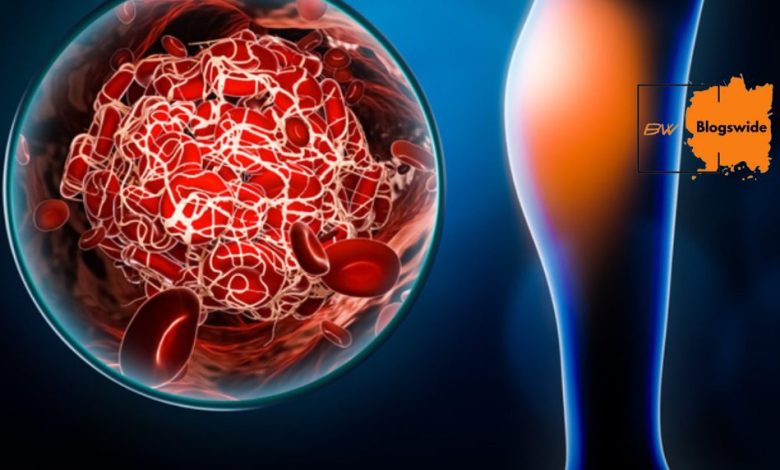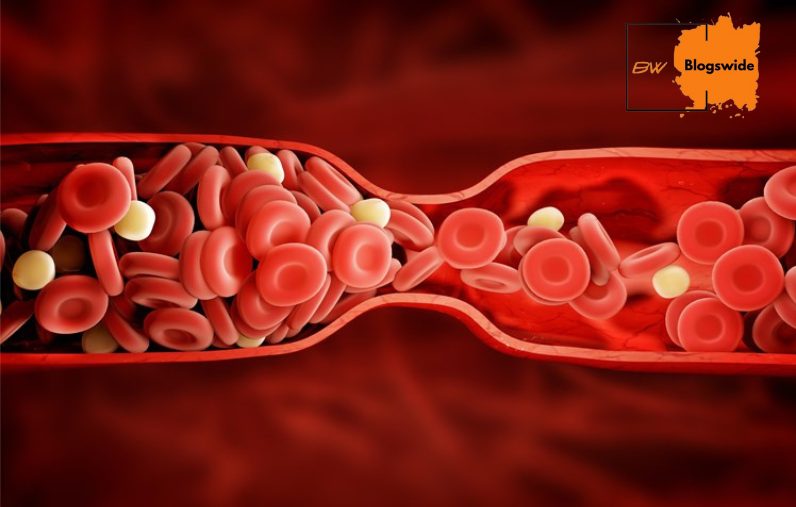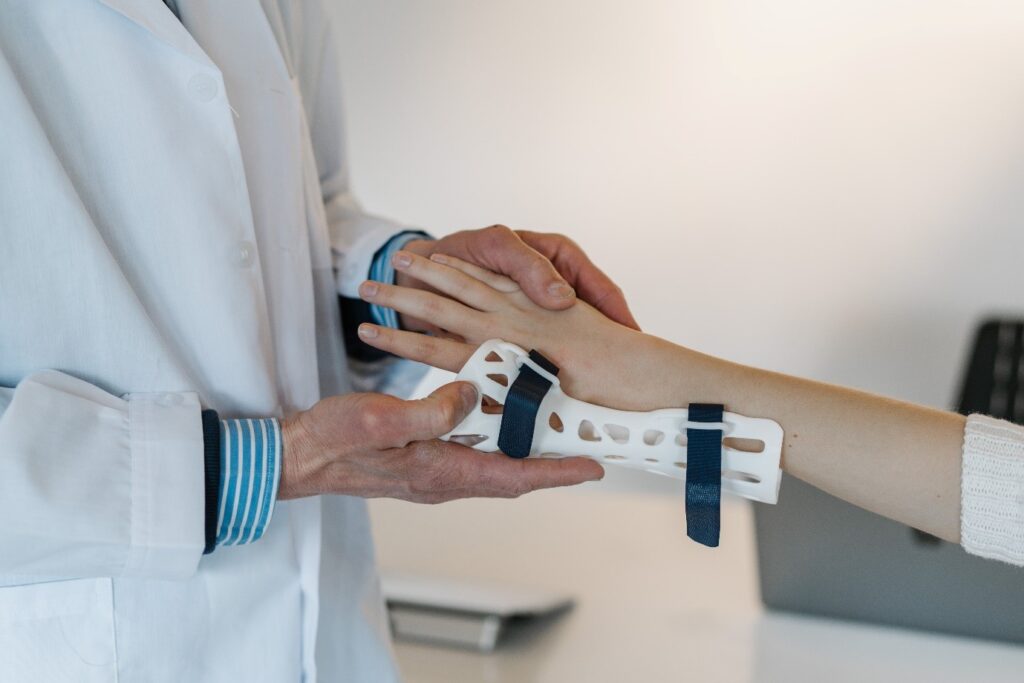How Fast Does A Blood Clot Travel From The Leg To The Lungs?

Clots in the legs could prove lethal if they travel rapidly to the lungs. This could take from minutes to several weeks. How fast does a blood clot travel from the leg to the lungs and its deteriorating impact on the body will be discussed in this article.
Blood clots save the day when we get it after having a wound. But when blood clots form in our body, it could prove lethal. Moving clots are more disastrous than still ones in the internal body as they disturb the mechanisms which are essential for the normal functioning of the human body.
If one gets them in blood vessels, these clots can be a huge nuisance leading to heart attack, strokes, brain hemorrhage, and paralysis. Hence, it’s necessary to look after the body and avoid consuming food items with high cholesterol levels.
Table of Contents
How Fast Does a Blood Clot Travel from the Leg to the Lungs?
Blood clots that form in the legs or arms usually move toward the lungs if they’re dislocated. This is a medical condition known as pulmonary embolism, a hazardous disease. In pulmonary embolism, the clits get jammed in the pulmonary arteries that send blood to the lungs.

The word embolism (embolus) signifies the movement of clots to different parts of the body. When that blood clot blocks a vessel, it’s termed an embolism. Pulmonary is the name of an artery. Therefore pulmonary embolism is the blockage of the pulmonary artery by an embolus.
What are the causes of blood clots dislocating in the lungs from the legs (pulmonary embolism)?
As far as the point is concerned about how fast does a blood clot travel from the leg to the lungs? The causes of pulmonary embolism could be many. However, its primary cause is the movement of a cluster formed in the leg veins to the lungs. It’s another medical condition known as Deep Vein Thrombosis (DVT). Other causes of this condition are;
- Tumors
- Air bubbles
- DVT in the upper body
- Fat embolism (from a severely broken bone)
- After childbirth
- Drastic plane or car crashes
- After surgeries
- After serious injuries, heart attacks, burns, or fracture
- Long-term bed rest
Risk Factors for Pulmonary Embolus
People having certain medical conditions are at a higher risk of blood dislocation from the legs to the lungs. The risk factors include;
- Cancer
- Blood clotting disorders in the generation
- Heart disease
- Long-term use of estrogen therapy
- Using birth control pills extensively for a long period
Symptoms of Pulmonary Embolism
How fast a blood clot travels from the leg to the lungs depends upon the severity of the symptoms. Their symptoms may vary from the health conditions of one person to another or due to clot size. When there is an increase in blood flow getting blocked, such symptoms appear;
- Coughing with bloody mucous production
- Dizziness
- Heart Palpitations (frequent heart pounding)
- Leg pain
- Swelling
- Sharp and sudden chest pain
- Problematic breathing or shortness of breath
Do Blood Clots Found in the Legs Always Travel to the Lungs?
Regarding in the domain of How Fast Does A Blood Clot Travel From The Leg To The Lungs? In most cases, blood clusters travel from the legs to the lungs. Deep in veins, substances accumulate and form clusters. Due to the pressure of blood and lightweight clusters begin to move. It’s more common for them to travel toward the lungs (DVT) rather than other body parts.
In contrast to that, blood clots rarely travel to other parts of the body. No matter where they are, they could be life-threatening if there’s no prompt treatment. Even if they don’t dislocate, they can impair moments and cause trouble in waking or other leg moments including paralysis of the legs.
Related:
Causes and Symptoms of Blood Clots Formation
How fast a blood clot travels from the leg to the lungs depends upon the condition of the patient. The symptoms and causes of its formation will clarify how they are formed and their movement.
Causes
Blood clots form in our body without any triggers (wound or injury) due to certain circumstances;
- Prolonged sitting
- Pregnancy
- Smoking
- Obesity
- Extensive bed rest
- Breast cancer medicines
- Exercising hormone replacement therapy
- Trauma (serious injury)
- Aging (particularly over 60)
- Blood clots related cancers (pancreatic, lung, and multiple myeloma cancer)
- Chronic inflammatory diseases
- Certain infections (HIV/AIDS, Lyme disease, and Hepatitis C)
- Autoimmune disorders
Symptoms
Various symptoms may or may not show to the person facing pulmonary embolism. It’s due to the variation in the size of the clusters and the health of the patient. When the blockage of blood increases, the person faces various symptoms;
- Continuous coughing with bloody mucous
- Dizziness
- Pounding of the heart or increased heartbeats (heart palpitations)
- Swelling
- Pain in legs
- Sudden and intense chest pain
- Shortness of breath
- Fever
- Discolored or clammy skin (a medical condition called cyanosis)
If any of these symptoms are observed, kindly visit the doctor immediately.
Does Clot in Lungs Can Cause Death?
It doesn’t matter how fast a blood clot travels from the leg to the lungs, what matters is how serious the condition of the patient is. Without immediate treatment, clots can enlarge and make the condition worse. There are different diseases instigated by blood clots that could be life-threatening.
- Cardiac arrest — the pumping of blood to the heart stops and it stops working.
- Cardiac Arrhythmia —an irregular rhythm of the heartbeat.
- Pleural Effusion — a condition in which fluid accumulates in the pleural membranes of the lungs.
- Pulmonary hypertension — high blood pressure in the lungs
- Pulmonary Infarction — lung tissues die and cause the failure of the lungs.
How to Prevent Blood Clotting?
As germane with How Fast Does A Blood Clot Travel From The Leg To The Lungs? Doctors always stress some precautions that could help in preventing blood clot formation. It’s more important to percent their formation so one doesn’t need to worry about how fast a blood clot travels from the leg to the lungs.
Blood Thinners (Anti Coagulants)
This medicine is given to people having thick blood. Blood thinkers are also given to patients having clots, before and after surgery for regular blood transfusion. Heart and cancer patients also use this medicine.
Pneumatic Compression
This is a massage that helps in improving blood flow in veins or legs. Not only does it straighten out the jammed veins but also improves blood circulation. The treatment utilizes calf-high cuffs or thigh-high cuffs in the procedure. The air deflates and inflates them to improve circulation.
Physical Activity
Doing exercise and moving your body after surgery helps in preventing the formation of blood clots. Hence one must take exercises that help in regulating blood flow through the whole body.
Compression Stocking
Compression stockings are inexpensive and help in circulating the blood flow throughout the body. Their effectiveness could be proved by the straightening of blood vessels in the body.
Leg Elevation
Raise legs whenever one has the time or at night. Through stocking pillows, or blocks, one can elevate legs about 4 to 5 inches (10 to 15 cm). This would help in preventing clusters of vessels.
How Long Does it Take to Eliminate a Blood Clot?
As how fast does a blood clot travel from the leg to the lungs is the focal topic. A blood clot can take up to several weeks or months to completely dissolve. Even the surface clot is considered the minor one. These minor clots also take up weeks to dissolve. When the bigger clots get smaller, the symptoms also lessen.
What’s the Best Treatment for Pulmonary Embolism?
The best treatment for blood clots formed in the lungs or legs is anticoagulant medication. The severity of the condition may cause other complications (to other organs like the heart). Following procedures could be followed for quick recovery.
Anticoagulant Medications
Blood thinners (anticoagulant medications) thin the blood viscosity this represents future blood clots and reduces the already-formed blood clusters.
Don’t use blood thinners on your own. Rather consult a physician, make appointments, and regularly monitor the clots. The doctor will prescribe the necessary guidelines for taking medication and its tenure. Such conditions need regular checkups.
While taking anticoagulants, one needs to take follow-up tests and appointments including blood tests (prothrombin time test). Prothrombin time tests visualize the decrease in the size of clots in the body. Read more about How fast a blood clot travels from the leg to the lungs.
Read:
Thrombolytic Therapy
Last but not least about How Fast Does A Blood Clot Travel From The Leg To The Lungs? Thrombolytic therapy is also known as clot busters. Thrombolytic medication includes a plasminogen activator (TPA) to dissolve the jumbled blood.
Thrombolytic therapy is received in certain situations when a person is facing high blood pressure or other such instabilities due to clots. The treatment takes place in the intensive care unit (ICU).
If you have any queries about the article How fast a blood clot travels from the leg to the lungs, mention them in the comments.



